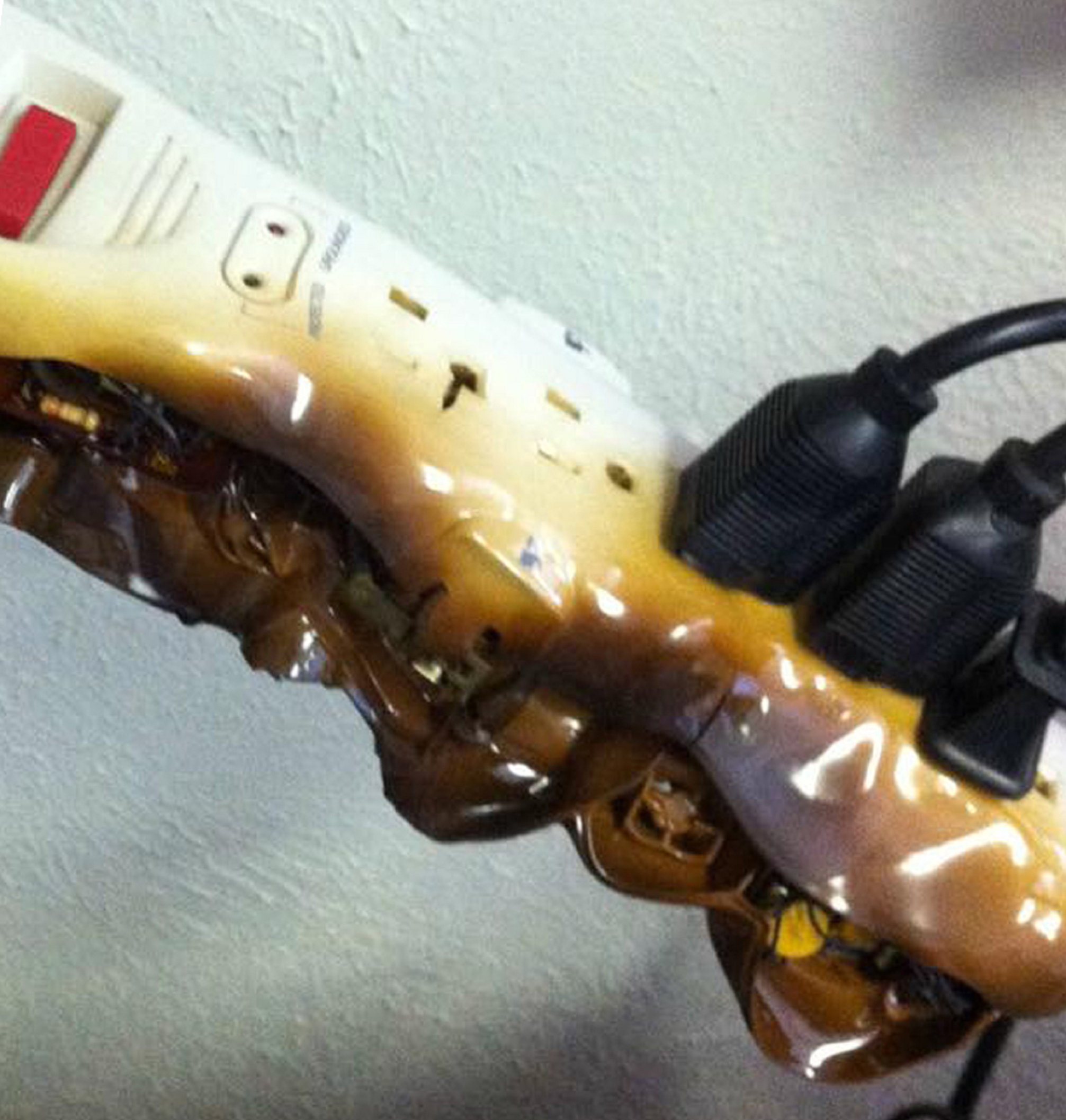"Sorry, I'm not buying. Show me anything in the NEC that prohibits this. I've seen a ton of cooked cords and plugs as well, but none that were strictly the result of the practice of simply daisy chaining power strips. Truthfully, I don't know what state you're in, but I've never heard of this prohibition, and I seriously doubt it's based on science."
* * *
The power strips that I have inspected personally were of the very cheap type, and the science, if you insist, is this: The small metal contacts, often not of a large gauge, or of the best quality metal, of an individual receptacle on one strip are not robust enough to handle the combined load of the next strip in line, nor the combined load of the next one added after that one. The entire load of strip #2 and strip #3 is drawn from one of the cheesy receptacles on strip #1, which then overheats and can cause a fire.
Another issue is the arc-flash potential, if and when a load is suddenly and unexpectedly unplugged under power. The resulting arc has been proven (scientifically) to cause fires in drapes, bed clothes, and other combustible materials. The most recent (residential) code requires receptacles that are equipped with arc-fault circuit interrupters (AFCI's) in all rooms except bathrooms. This applies to all new residential construction and to rooms that are being renovated in existing dwellings. An alternative is to equip the electrical panel with circuit breakers that are AFCI-compliant.
There are so many important things to argue about. Why are we divided over an obvious issue that can be mitigated so easily? This is not an argument about the 2nd Amendment or vax or masks; it's about keeping our group of friends, some of whom often do not understand electricity the way others of us do, safe.
* * *
"I don't know what state you're in..."
New York State Fire Code:
§ F605.5 Extension cords. Extension cords and flexible cords shall not be a substitute for permanent wiring. Extension cords and flexible cords shall not be affixed to structures, extended through walls, ceilings or floors, or under doors or floor coverings, nor shall such cords be subject to environmental damage or physical impact.
* * *
"Show me anything in the NEC that prohibits this."
National Electric Code:
§ 400.7 Uses Permitted.
(A) Uses. Flexible cords and cables shall be used only for the following:
(1) Pendants.
(2) Wiring of luminaires.
(3) Connection of portable luminaires, portable and mobile signs, or appliances.
(4) Elevator cables.
(5) Wiring of cranes and hoists.
(6) Connection of utilization equipment to facilitate frequent interchange.
(7) Prevention of the transmission of noise or vibration.
(8) Appliances where the fastening means and mechanical connections are specifically designed to permit ready removal for maintenance and repair, and the appliance is intended or identified for flexible cord connection.
(9) Connection of moving parts.
(10) Where specifically permitted elsewhere in this Code.
* * *
The NEC is not a law, however, an Authority Having Jurisdiction, (the AHJ -- the fancy way of saying your local building inspector, fire marshal or code enforcement official) may enforce the NEC rules if the NEC is added to a local code "by reference." Other than New York City, which is essentially the 51st state when it comes to these administrative laws, I can't think of any AHJ that does incorporate the NEC, by reference, in its codes.




